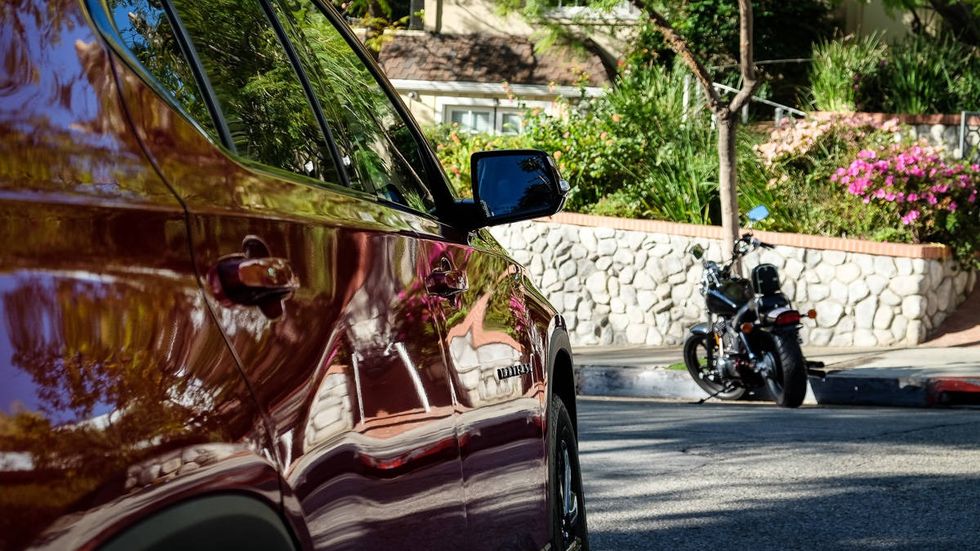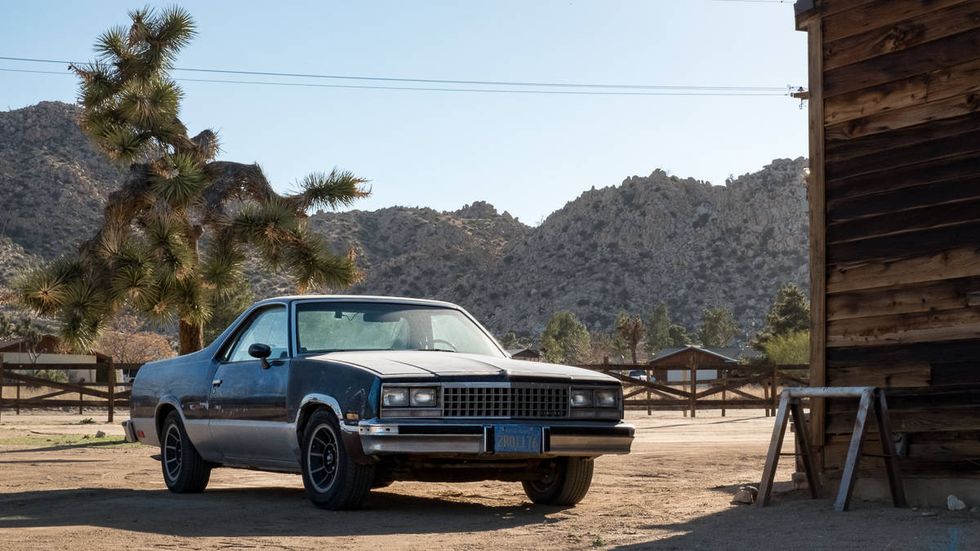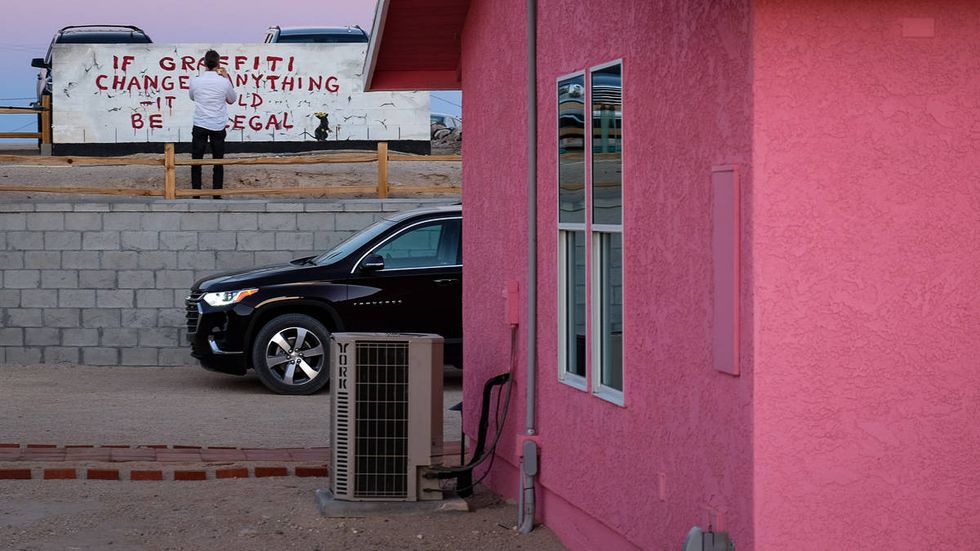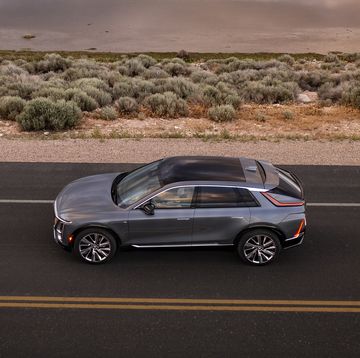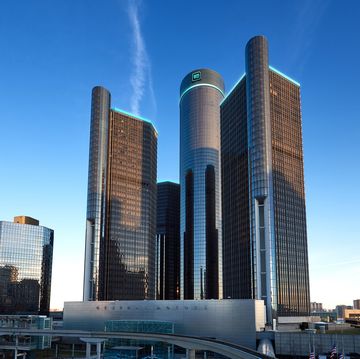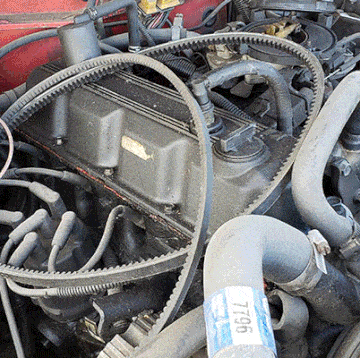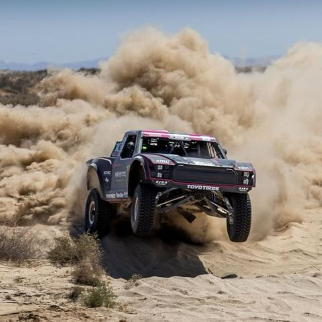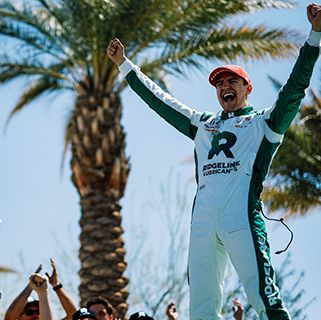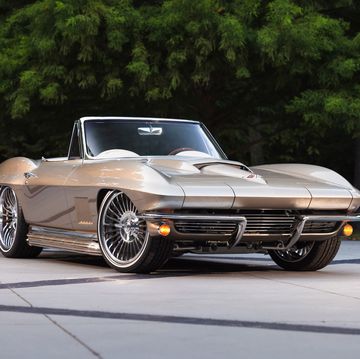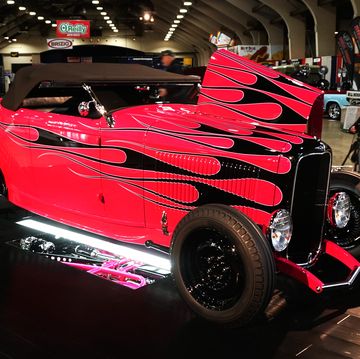The invitation from Chevrolet is more than I can resist: “Experience what it’s like to make it as a musician in California.” Along with a group of fellow car writers, I’ve gotten it because I also play music, something that Chevy sees as being integral to their brand. “From the Beach Boys’ ‘409’ to Prince’s ‘Little Red Corvette,’ it’s part of our very DNA,” that sort of thing. In previous years, Chevy has brought rockin’ auto journalists to places like Nashville and Muscle Shoals, Alabama. This trip will head west, to L.A. and the High Desert around Joshua Tree National Monument, where we’ll jam together, log some studio time and – the ostensible, automotive purpose of this trip – sample the all-new 2018 Chevy Traverse RS.
Here’s why this is funny, though. Playing music is actually my day job; writing about cars is something I do on the side – sort of like the other entertainer with an Autoweek byline, Jay Leno, except I actually need the money. Think of me as the indie-rock version of Pink Floyd’s Nick Mason: Instead of a 250 GTO, I’ve got a 250 (-thousand-mile Saab) SPG.
Having grown up in Southern California, I also know firsthand what it’s like to make it there as a musician – if we understand “it” to mean “your life exceedingly difficult” and “your family wonder when you’re ever going to amount to anything.” Indeed, many are the nights I’ve spent “experienc[ing] the West Hollywood music scene,” as breathlessly touted by the invite; most of them began with getting yelled at by the stage manager of the Troubadour about his house rules no matter how many times we’d played there before.
As for the Chevy connection? I’m not sure that this would’ve turned up on their list of the more than 2,000 songs that mention the brand, but sure enough, the band I play in, the Mountain Goats, has one, too: a 15-year-old B-side we dusted off and started playing live for the first time just last year. It’s a song about a dysfunctional couple who, after a day of hard drinking, head over to “Pete Brown Chevrolet” for a test drive that ends when they abandon the car behind a high school and set it on fire. The song is called “New Chevrolet in Flames.”
Come to think of it, I’m going to guess Chevy’s PR department hasn’t heard it.
A few days later comes the follow-up email from Nashville producer and songwriter Frank Rogers, a legitimate industry heavyweight whose credits include names like Brad Paisley and Trace Adkins, in addition to having served as ringmaster on each of Chevy’s two previous studio ventures. No pressure, says Rogers. It’s all about having fun, but we should be prepared to play three songs:
• Queen, “Crazy Little Thing Called Love”
• The Beatles “Come Together”
• U2 “I Still Haven’t Found What I’m Looking For”
I don’t know about you, but for me, these register as follows: OK, oh no, and oh God. Queen…well, come on, who doesn’t like Queen? The Beatles, on the other hand, started giving me hives in high school, around the time I heard from the 500th boomer about how nothing that came after them would ever be worth a damn. Except, maybe, they might allow, U2. Pompous, insufferable U2. Of course.
Upon arrival in LA, we’re brought to the Sunset Marquis, a hotel that in all my years of touring I haven’t stayed at before, from which we can surmise that it probably doesn’t come up on Priceline. Located off the Sunset Strip, just up the street from the historic Roxy and Whisky a Go Go, the Sunset Marquis has been a home away from home to rock royalty for decades, going back to the days when pre-fame Bette Midler and Neil Diamond used to perform in the courtyard in exchange for a room. Lined with palm trees and lush gardens, it exudes enough old-Hollywood glamour to make you feel like you’ve wandered into a Lana Del Rey video. Next to the pool, there’s a photo of Joe Strummer standing next to the pool.
We’re gathered off to the side of the lobby as general manager Rod Gruendyke runs down the roll call of iconic regulars for us, which over the years has spanned from Bruce Springsteen and the Ramones to Guns N’ Roses and Green Day. He’s still telling stories when, as if to drive the point home, the unmistakable figure of Steven van Zandt can be seen coming in off the street and slinking past over the unsuspecting Gruendyke’s shoulder.
After a brief tour of NightBird, the hotel’s small but fully equipped basement recording studio -- the list of people who’ve used it is equally long, but my favorite pair of names is Burt Bacharach and Lil Wayne -- we’re brought through the courtyard, past the haunted wing of the hotel and the lime tree planted in honor of U2’s tour manager of 30 years, Dennis Sheehan, who died here in 2015 (no, my snark toward U2 does not extend to their late employees, namaste), to a suite where an assortment of acoustic instruments is waiting for us. Turns out I’m the only bassist; the other half of the rhythm section is Eddie Alterman, the editor-in-chief of Car and Driver, a magazine I first became obsessed with when I was 12 years old -- even before I discovered this one. OK, now I’m starstruck.
There’s a lot of noodling initially, and a couple people over here playing one thing while people over there are playing something else -- it feels a little bit like a high school band practice, to be honest -- but Rogers, the producer, helpfully grabs the reins and guides us through a rehearsal of the songs we’ve been assigned. To everyone’s pleasant surprise, we don’t sound half bad. The mood is good! The vibe is strong! I can’t believe I’m playing in a U2 and Beatles covers band, but whatever. As a bassist, being able to get over yourself is an occupational necessity.
The next morning begins with the obligatory marketing presentation over breakfast. Did you know that Chevrolet has been the fastest growing and most awarded automotive brand over the last four years? And that it currently boasts the broadest and freshest crossover lineup in the industry? I didn’t either, but apparently it has, and it does!
The new Traverse is a key part of that, and with the RS, Chevy hopes to offer customers a new alternative in the premium midsize SUV class, something missing from its roster until now. It’s an undeniably handsome package, the RS’s blackout trim and sculpted flanks neatly disguising the vehicle’s bulk and conveying an attitude that is confident and bold without looking like some sort of angry-for-no-reason behemoth prepared to devour anything in its path.
Our drive to the desert is a three-hour straight shot out I-10, which doesn’t offer much in the way of in-depth vehicle-dynamics analysis. I can at least report that the RS’s exclusive 2.0-liter turbo-four moves the 4,400-pound Traverse with an urgency that the similarly configured engine in my Saab would have trouble wrapping its 16-valve head around, pushing 257 hp and an even more impressive 295 lb.-ft. of torque (29 more than the Traverse’s standard V6) through a nine-speed automatic that never draws undue attention to itself. That said, with its stiff ride and generous dimensions, the Traverse ultimately feels like a 7/8-scale Tahoe, an impression born out by glance at the specs, which reveal nearly identical overall lengths.
Still, the trip is a swift and comfortable one. As we turn off the 10 onto Route 62 up toward Twenty-Nine Palms, I’m reminded of a similar drive 25 years earlier, en route to play a house show -- a desert slab show, at least -- with my old band, DiskothiQ (don’t ask). It was on this stretch of road but maybe 50 degrees warmer when in our drummer’s second-generation Civic noticed a cloud of thick, black smoke enveloping the two of us in my brother’s Fox-body Capri. The ambient heat must’ve been sufficient to cause the upholstery beneath the Mercury’s folded-down rear seat to spontaneously combust, because combusting it was, and I can tell you without equivocation that burning Capri interior does not smell good for you. We hastily pulled out the gear and managed to contain the fire with fistfuls of roadside dirt before heading on to the gig without further incident. All in a day’s work.
Happily, no such issues afflict our Traverse. After an alfresco lunch surrounded by cholla cactus and Joshua trees followed by another acoustic rehearsal, we swing past to pay our respects at the Joshua Tree Inn, where Gram Parsons died, on the way to our night’s accommodations at the Pioneertown Motel. Pioneertown is a thing unto itself. Founded in the ’40s by a group of investors that included Roy Rogers and Gene Autry, it began life as a film set for westerns; the motel was where actors stayed while shooting. Lately it’s turned into something resembling a bohemian artists’ colony, but it still feels genuinely remote: There aren’t yet enough hipsters here to dim the jaw-dropping canopy of stars at night.
Curiously, no mention is made of Pappy & Harriett’s, the roadhouse next door, which is less a historic part of Southern California rock lore than a very much current and thriving one. Looking every bit the Old West saloon that it is, Pappy & Harriett’s is a 300-capacity cantina that’s become a destination venue for showgoers and artists alike. Freakin’ Paul McCartney performed here a couple years ago. So did the Mountain Goats (separately, mind you), and apart from the low ceiling making for one of the deadest-sounding stages I’ve ever experienced, it was awesome. I highly recommend the 18-ounce ribeye, but only if you’re not playing later.
With sunset rapidly approaching, we’re whisked to our adventure’s grand finale, 20 minutes into the desert above Joshua Tree, where Pink Satellite Studios occupies a secluded hilltop with a view of desert scrub that stretches to the purple mountains on the horizon. Our hosts are the studio’s owners, an unlikely pair.
Chris Haines seems almost embarrassed talking about his accomplishments, but he admits to being a recent AMA Motorcycle Hall of Fame inductee and 15-time Baja 1000 winner who these days provides off-road instruction to U.S. and British special forces. He’s also a guitar collector whose love of the Beatles led him to a rock’n’roll fantasy camp at Abbey Road, where he befriended his future neighbor and business partner, Spike Edney.
Agreeably foul-mouthed and garrulous by comparison, Edney is a keyboardist and trombonist who since 1984 has served as the musical director -- the big-rock-tour equivalent of a racing crew chief -- for Queen, and he has been the point man for such events as the 1992 Freddy Mercury Tribute Concert for AIDS Awareness, where Elton John and Axl Rose memorably made nice, and even Nelson Mandela’s 90th birthday tribute concert in London’s Hyde Park.
For a moment, I wonder what it says about rock music that it can bring together a guy who trains special-ops soldiers with someone who’s worked with Nelson Mandela, but my brain starts to hurt. I chalk it up to the Beatles and leave it at that.
The studio’s all set up for us, this time with a full kit for Alterman and electric guitars and amps for the rest of us, spread around a comfortably sized main tracking room with a vocal booth off to one side, adjoining a cozy control room. My bandmates can barely contain their excitement as we slip on our headphones to start getting levels, and this is when I start to feel a little sheepish.
Not to sound like a jaded jerk, but a week ago at this time, I was doing the exact same thing in North Carolina. I mean, this is my job. And what might not be obvious about recording, if you haven’t done it before, is that it’s just tedious. Granted, there are the occasional moments of magic, when you nail a take or a song takes an unexpected turn, but honestly, 90 percent of the time I’ve spent in studios is people sitting around on laptops while mics are set up or someone tries to track down a barely audible buzz. The other 10 percent consists of the questions, “Should we do it again?” and “Why don’t you come in and listen?”
By contrast, I’ve seen what these people do for a living. Maybe flying off to Portugal in business class to drive the latest 600-hp, $100,000, four-door crossover coupe around a racetrack eventually gets boring, too; I couldn’t tell you. But at least one of us is leaving from here after we’re done to spend the weekend at Thermal lapping an Audi R8 LMS GT4. If that ever fails to raise your pulse, you should probably call an ambulance.
(I’m not going to claim that stepping out onto a stage in front of 1,000-plus people doesn’t provide a similar charge, but that’s the helmeted-on-a-track part of the job. Recording is the equivalent of the sitting in your cubicle writing the story afterward.)
Edney sits in with us on keys as we run through our set, getting decent takes of the songs on only the second or third try. A few punches, some overdubbed group handclaps, and it’s a wrap. Rogers, the producer, promises to take the tracks home to Nashville with him and get the finished mixes back to us soon.
Will our version of “I Still Haven’t Found What I’m Looking For” measure up to Negativland’s? Only time will tell. But sitting there on the riser playing “Crazy Little Thing Called Love” with the editor of Car and Driver at one elbow and Queen’s keyboardist at my other, I had to pinch myself: After 30 years of trying, I’ve finally made it!
Thanks, Chevy. (Really, though -- it was fun.)
Postcript: Want to know what it was like in LA -- or at least a sliver of it -- back in the day? Read all about it here.

